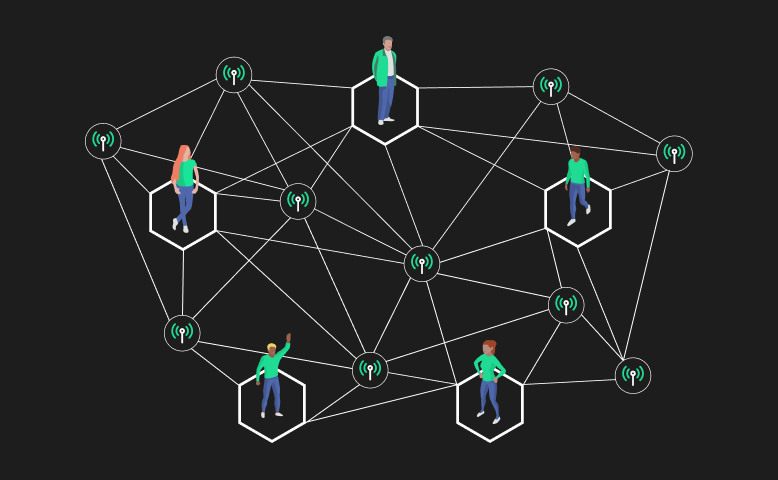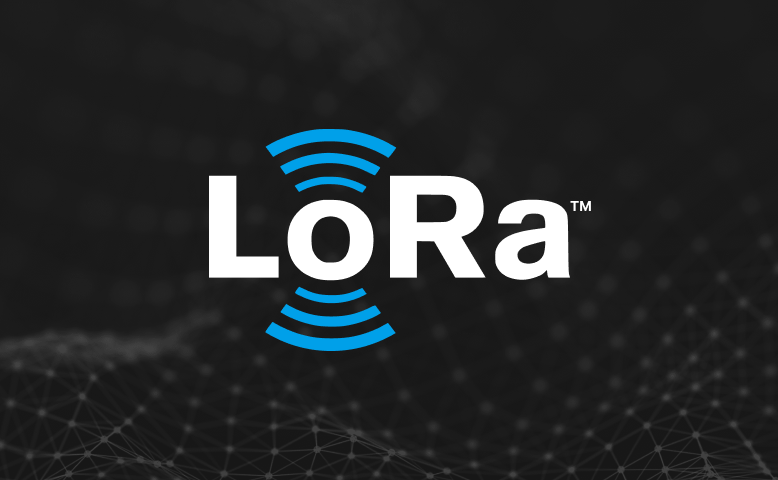
The Helium network is powered by hotspots that furnish Internet of Things (IoT) devices with long-range, low-frequency network coverage. The Helium blockchain, which rewards hotspot owners with the digital currency HNT, is the center point of the Helium network. Hotspots are rewarded with HNT for a range of tasks, including routing data from devices connected to The People’s Network, confirming their position, and challenging other hotspots to do the same.
Data Credits (DCs) come into play when Helium network users need to pay network transaction fees, and are closely related to the Helium Network Token (as you will see later in this post). In today’s blog, we’ll talk about:
- What are Data Credits?
- How much does a Data Credit unit cost?
- How Data Credits are used on the Helium network
- Ways Data Credits are generated
What Are Data Credits?
The Helium blockchain (or simply, The People’s Network) utilizes two separate tokens in tandem to maintain a ‘Burn-and-Mint equilibrium’. The first one is the Helium token (HNT); the second is called Data Credits.
Data Credits are used to settle all Helium blockchain transaction fees when data is transmitted on the network. This includes onboarding new hotspots, sending HNT, and asserting hotspot location. Data Credits are created by burning HNT, are non-exchangeable, and tied to a single user. The People’s Network only accepts Data Credits as payment when sending data.
HNT and Data Credits
The relationship between these two tokens is symbiotic: Helium Data Credits are obtained from HNT via on-chain “burn” transactions, enabling usage of the network. In other words, DCs are generated by permanently removing an equivalent amount of HNT from the total token supply. These newly generated Data Credits are used to pay transaction fees on the network.
Hotspot owners should know that antenna DBI gains and hotspot placement are important elements in HNT earning potential, because miners can generate more HNT by maximizing the amount of data transmitted and received between Helium hotspots. A hotspot’s vertical height, closeness to other hotspots, and antenna positioning are all important factors that can affect HNT generation.
HNT and Net Emissions
The Burn-and-Mint equilibrium is designed to allow the supply of HNT to adjust to network usage such that, when equilibrium is reached, the quantity of HNT in circulation stays constant every month.
Given the above scenario, the obvious problem with constantly burning HNT for Data Credits is the depletion of HNT supply. However, the Helium community devised a solution to the Burn-and-Mint dilemma with HIP 20: recycle a limited portion (1%) of burned HNT into a ‘Net Emissions’ pool every epoch. This ensures that some amount of HNT will be available for hotspot rewards in perpetuity, despite the supply of HNT being capped at 223 million tokens.
To maintain downward pressure on token supply, any HNT burned in excess of the 1% Net Emissions cap will be permanently removed from circulation every epoch. The Helium community has the ability to adjust the cap on the Net Emissions chain variable.
This mechanism will be of increasing importance as HNT emissions decrease over the next 50 years, as shown above. Network utilization will drive token scarcity as more HNT is burned, however, Net Emissions will prop up token supply in later years to counteract decreasing hotspot rewards from minting.
How Much do Data Credits Cost?
Like all other blockchains, Helium uses a system of transaction fees to process transactions on the network; and Data Credits serve as the currency for all transactions on the Helium blockchain. The cost of one Data Credit is fixed at a constant price of $0.00001 USD.
exactly why we implemented the burn and mint model for @helium. the cost of using the network is always the same regardless of market fluctuations https://t.co/oQz7RHTNIG https://t.co/vz6F0XhTqy
— amir.hnt (🎈,🎈) (@amirhaleem) June 20, 2022
A single Helium Data Credit covers 24 bytes of LoRaWAN payload. A 25-byte packet payload typically costs the same as one with a 47-byte payload, or 2 DCs, because the network rounds up payloads above 24 bytes.
In order to keep the cost of using the network consistent, the cost of Data Credits is affixed to USD even though they are created by burning HNT. Data Credits are not transferable or exchangeable; similar to cell phone minutes, they can only be used by their originator.
How Are Helium Data Credits Used?
If you’re a hotspot owner, you generally do not need to worry about Data Credits unless you also plan to build sensors and devices to transmit data. Data Credits are used to pay all transaction fees such as onboarding new Hotspots, sending HNT, and asserting device location.
Although Data Credits are produced by burning the circulating supply of HNT, the price of Data Credits is fixed in USD. Data Credits are non-transferrable and can only be used by their original owner. Data Credits cannot be re-sold or traded on an exchange, but are given as network data transfer rewards to hotspot owners.
How are Data Credits Generated?
Data Credits are used on the Helium network to settle transaction fees, and HNT must be burned in order to produce Data Credits. By burning HNT to distinct maker addresses, an approved hotspot maker can supply Data Credits to the various onboarding servers for the hotspot devices they sell.
Thankfully, users no longer have to manually generate DCs to pay network fees due to a method dubbed “Implicit Burn”. The HNT burn takes place automatically without user input, as long as the Helium wallet being used to submit the transaction has enough HNT to burn into DCs to pay for the transaction.
Data Credits can, however, be purchased through Helium Console with a credit card or by burning HNT directly from a Helium wallet. Data Credits purchased with a card are generated by burning HNT on the backend of the transaction. HNT can also be burned via the Helium Wallet CLI.
Hotspot Data Credit Fees
Any hotspot that wants to join the Helium blockchain must have an adequate number of Data Credits at its creator address. Each hotspot must receive a minimum of 5,135,000 total Data Credits from hotspot makers. In this blog, we talked about:
- What Data Credits are
- How data credits are created and used on the Helium network
- How much do data credits cost and DC usage on The People’s Network.
- The relationship between HNT and data credits
Emrit makes it even simpler to join the Helium network than it already is. At Emrit, we hold your hand every step of the way to ensure that you don’t make the same mistakes that most beginners make.
We cultivate a setting that supports your desire to learn more and eases your integration into the people’s network. Our user-friendly resources make it simple for consumers to sign up even if they just have a cursory understanding of blockchain technology. Join us right away to be part of a global movement of thousands of users paving the way for the development of a productive network that is affordable, convenient, and clean.



